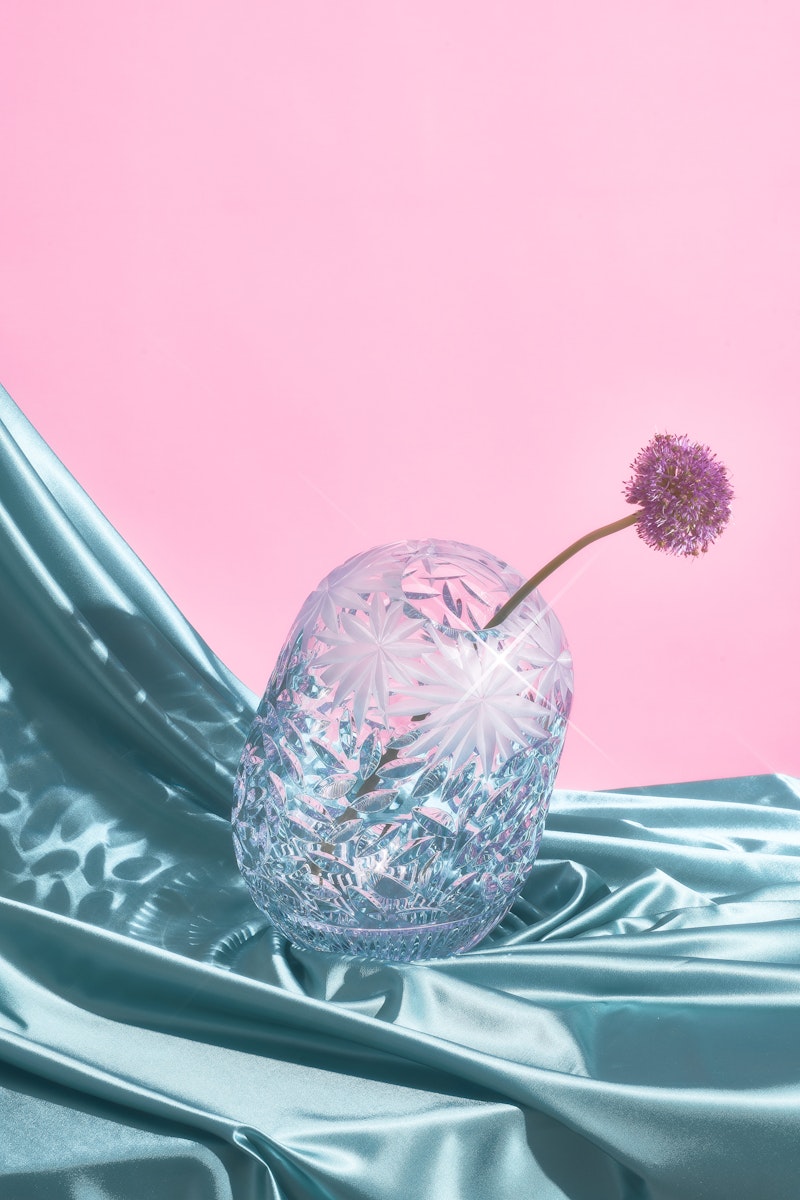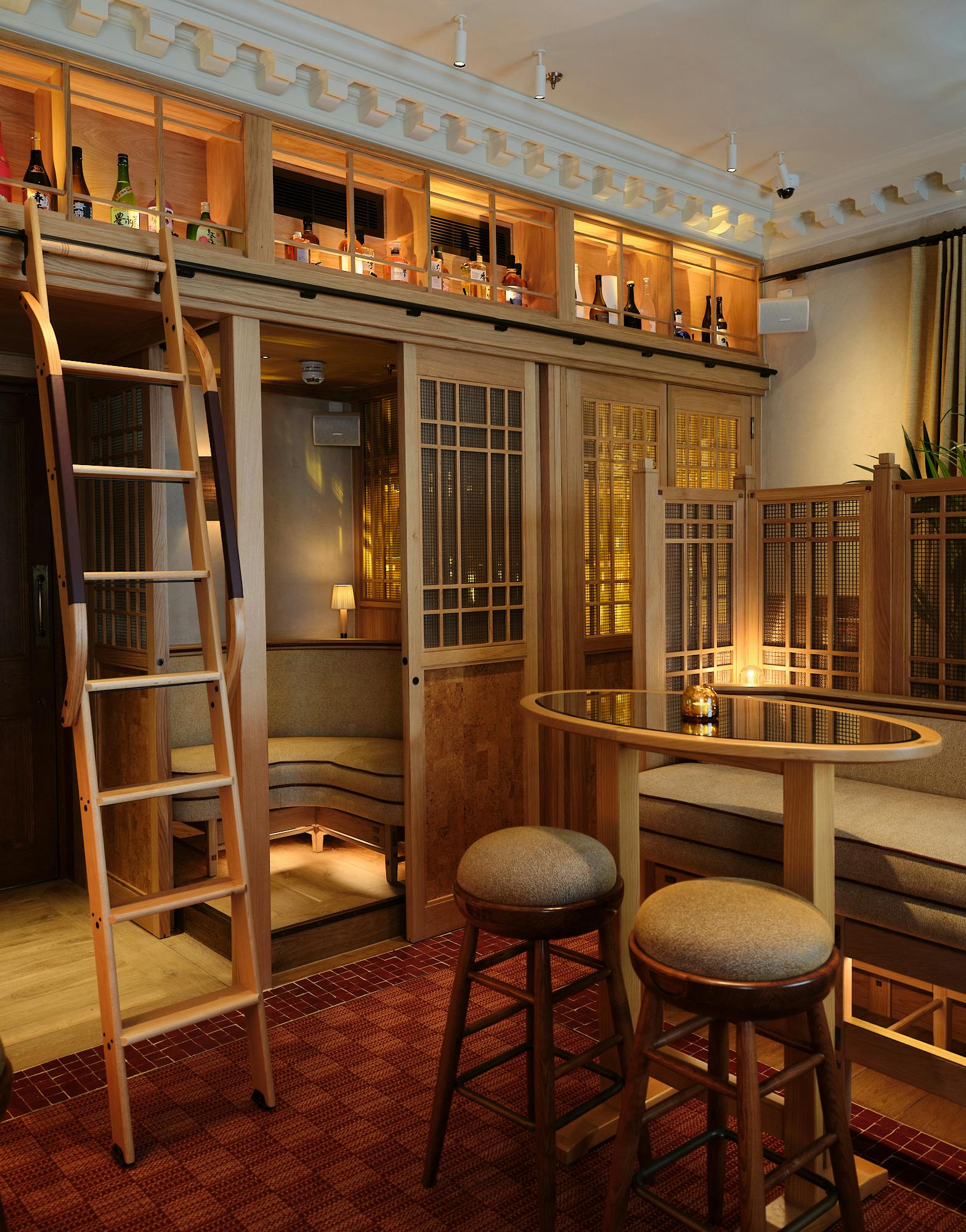
Words by SODA team
24 Sep 2024
Olga Treivas - Redefining Crystal Glass Design
SODA sits down with São Paulo-based architect, crystal glass designer, and founder of the Treivas Architecture Bureau Olga Treivas to talk about her career, how she transforms traditional perceptions of crystal glass and the future of design in this niche field.
Can you tell me a bit about your early career/education?
I grew up in a family of architects, which naturally exposed me to the world of design and construction from an early age. My childhood was filled with frequent visits to the Moscow Architectural Institute, one of the most prestigious architecture universities in Russia, and I spent countless hours observing the vibrant and creative environment, which sparked my interest in the field. I loved drawing, but even more, I enjoyed creating models. I would build "houses" from anything I could find and LEGO sets became my favourite toy, as they allowed me to explore and experiment with design concepts.
This early exposure to architecture made my decision to pursue it as a career feel like a natural choice. I went on to study at the Moscow Architectural Institute, where I earned my architect diploma. My education there solidified my passion for the field and provided me with a strong foundation in both the technical and creative aspects of architecture.

Courtesy of Olga Treivas
How did you get into working with glass? What kind of techniques do you favour?
My journey into working with glass began much like my work in architecture, where I often find myself drawn to underexplored niches. In architecture, I saw a gap in exhibition design and focused on filling that space. Similarly, when I first encountered crystal glass, it was an overlooked material in design — few people were working with it, and it wasn’t particularly popular. This lack of attention sparked my curiosity, and I saw it as an opportunity to explore a new direction. Over time, what started as an experiment turned into a deep passion. Glass opened up endless creative possibilities for me, and I’ve continued to explore its many facets and applications.
Working with glass is challenging, but that's part of what makes it so rewarding. It’s a heavy material with a complex production process, and there’s a certain craftsmanship involved that requires precision and patience. I am particularly interested in preserving and promoting traditional glassmaking techniques, often collaborating with small workshops, many of which are tied to museums. These artisans help keep the craft alive, and it’s important to me to continue their legacy, encouraging new generations to engage with this material. In today’s design world, I see glass as undervalued, and part of my mission is to bring more attention to its unique properties and the craftsmanship behind it.


Left: “Summer” vase from “Four Seasons” series, 2021 Crystal Vase; Right: “Spring” vase from “Four Seasons” series, 2021 Crystal Vase. Courtesy of Olga Treivas.
When did you start Treivas Architecture Bureau? Were there any challenges when you set up the business?
I started Treivas Architecture Bureau in 2009 with a vision of combining architecture with art in a way that felt personal and deeply connected to craftsmanship. Over time, we’ve grown into a small, dedicated team. This allows us to maintain a hands-on approach to each project, ensuring that every detail reflects our values.
One of the early challenges we faced was establishing ourselves in a competitive market. To stand out, we focused on underexplored areas like exhibition design, which wasn’t heavily occupied at the time. This approach helped us differentiate our work. A major turning point was our collaboration with Rem Koolhaas' OMA Bureau on the renovation of the Garage Museum of Contemporary Art, which solidified our reputation. By emphasising the imperfections, irregularities, and artistic qualities of architecture, we’ve been able to carve out a unique niche and build a strong identity in the industry.

“Upon Request”, Heydar Aliyev Cultural Centre, Baku, 2019. Image Courtesy of Olga Treivas
Why do you like to work with museum buildings and educational spaces?
I’m drawn to working with museum buildings and educational spaces because they offer unique opportunities to create environments that inspire and educate. Museums and educational institutions are places where people come to explore, learn, and engage with ideas and art. Designing these spaces allows me to contribute to experiences that enrich people's lives and foster a deeper understanding of art and knowledge.
These types of projects also align with my belief in the importance of creating spaces that provoke emotions and reflections. Museum buildings and educational environments often require a thoughtful balance of functionality and aesthetic appeal, which challenges me to innovate and push the boundaries of design.

Image Courtesy of Olga Treivas
Do you think retaining craftsmanship in an increasingly digitised world is important?
Yes, I believe retaining craftsmanship in an increasingly digitised world is extremely important. While technology offers incredible tools and efficiencies, craftsmanship brings a unique human touch that cannot be replicated digitally. The attention to detail, the imperfections, and the individual artistry inherent in craftsmanship add depth and character to objects and spaces.
Craftsmanship connects us to tradition and the rich history of manual skills, providing a tangible link to our cultural heritage. It also allows for a level of personalization and quality that mass production often lacks.

Olga Treivas in the studio. Image Courtesy of Olga Treivas
How do you try to transform traditional perceptions of glass?
To transform traditional perceptions of glass, I focus on expanding its applications and showcasing its versatility in innovative ways. Glass is often seen merely as a material for windows or decorative elements, but I work to highlight its unique properties — such as translucency, reflectivity, and texture — through creative and unexpected uses.
I am particularly drawn to glass for its paradoxical nature. Its rich and complex history, combined with its plastic qualities and the contrast between its inherent hardness and conventional fragility, makes it a fascinating material to work with. In addition to experimenting with contemporary techniques, I am committed to preserving and revitalising traditional glassmaking craftsmanship. By bridging historical techniques with modern reinterpretations, I aim to rekindle interest in the material and inspire new generations to explore and appreciate its potential. Our mission is to bring more attention to glass’s often-overlooked qualities and processes, ensuring that this remarkable material continues to be valued and explored.

Crystal Objects Totems by Olga Treivas, 2011-2019. Image courtesy of Olga Treivas
What are some of your favourite projects that you’ve worked and what are some of the most challenging?
One of my favourite projects was designing a country house in Suzdal, where we merged traditional wood carving with modern architecture. This project involved extensive research and collaboration with artisans to preserve cultural details while integrating them into a contemporary design. The media and community response highlighted our dedication to craftsmanship and cultural heritage.
Another standout project is the Escola Britânica de Artes Criativas in São Paulo. This project was special because it aimed to create a vibrant educational and community space. We worked with Kiko Farkas Studio to develop a culturally reflective colour scheme and with MAC furniture company on playful outdoor furniture. The project’s success, recognised with the A'Design Award – Bronze in 2018, underscored our commitment to community and creativity.
In Suzdal, challenges included balancing traditional and modern elements, while in São Paulo, the main feat was creating a cohesive, functional learning environment. Both projects demanded creative problem-solving and were ultimately very rewarding.




What do you see when you look into the future of glass design?
I believe that if you want to move forward, you have to know your past. Glass-making is one of the ancient primary crafts and it has a long history of various experiments. Some glass-shaping and glass-decorating techniques, such as slumping, are more popular and common among contemporary craftsmen. Although there are so many more exciting techniques to master and some of them are on the verge of disappearing, I try to grasp any opportunity to learn from craftsmen. I also think that it is about time for glass design to be more conceptual. It would be interesting to move the usage of this material from solely functional applied arts into the sphere of fine arts.
- Words by Abbey Bamford
- https://www.instagram.com/treivas?igsh=eXM2OHd1Z2g2aTd0 - Olga Treivas Instagram
- https://www.instagram.com/treivas.team?igsh=ZGQ3NnI0d3g3b3k5 - Treivas Architecture Bureau Instagram






































